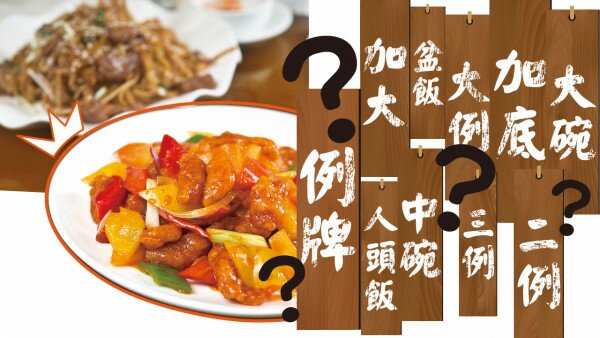With the approach of Chinese New Year, many people will have meals with family and friends at Chinese restaurants. They are also likely to order dishes with names denoting good fortune and larger portions than usual. However, not all consumers may understand the meaning of the serving-size terms commonly found on menus, such as "regular", "big regular" or "medium" bowls, along with the different price for each. They may also be unaware that there may be a price difference of up to a thousand dollars between a green and a red grouper, for example.
Last year, the Consumer Council received 721 complaints about restaurants, mostly relating to the quality of service and disputes over prices. To avoid consumer disputes due to unfamiliarity with certain industry jargon, the Council visited a number of venues to better understand the typical situations happened between restaurants and their consumers.
A "shocking bill" of more than $10,000 for a dinner when a group of consumers dined at a cooked food stall (dai pai tong). The incident revealed that there was a significant understanding gap between restaurants' and consumers' on prices and serving sizes. For example, a "regular" size in a general restaurant means about 8 taels of food, which is enough for about 4 people; a "big regular" often refers to 1.5 times the portion of a "regular", which would serve about 6 people; a "two-regular" or "medium bowl" serves roughly 8 to 10 people; and a "three-regular" or "big bowl" is suitable for 12 people or more. Diners should therefore enquire about the size of each dish before ordering.
As regards prices, dishes are usually charged in proportion to the serving size. For example, if the price of the "regular" dish is $100, the "big regular" will be about 50% more, i.e. $150. Another term used in the industry is "a la carte three-regular", which means both the portion and price of each dish is three times more than those of the "regular". If consumer does not understand the jargon or the waiter does not explain in detail, consumer may lose control of the meal budget easily.
Some Chinese restaurants offer "all-inclusive menu", in which the charges for tea, condiments, beverages and service are all included in the list price of a set meal. Some restaurants allow consumers to request bigger portions, which are charged extra in proportion to the price of the "regular" dish. If extra dishes are ordered, restaurants will charge the additional dishes at regular prices plus a service charge.
Hong Kong people love seafood. For a lot of seafood, since the menu price is subject to the fluctuating daily market prices, thus there is the proverb says "seafood price". During Chinese New Year, for example, when auspiciousness is important, some consumers may ask for the green grouper in the set menu to be replaced by a red grouper, which may mean an extra charge of a few hundred or even over a thousand dollar. Consumers must check carefully before ordering as these charge can vary widely from restaurant to restaurant. Restaurant staff have the responsibility to explain the prices and criteria clearly to their customers both verbally and on their menus.
Some consumers prefer to buy seafood themselves in the market and then request a restaurant to cook it for them for a "cooking fee", which can be charged according to the weight of the ingredients brought or the number of customers seated at a table. Consumer should ask for detailed pricing before visiting, and be sure all the charges, including those for tea, condiments, appetisers and corkage are understood.
In order to attract customers, Chinese restaurants often provide promotion prices at different times of the day: for example, special prices if consumer finishes eating and pays before noon or starts after certain time in the afternoon, or discounted prices for dim sum during afternoon tea time. Although working out the bill is simple arithmetic, promotional offers can easily lead to disputes. Because of a shortage of waiters, there have been many complaints about consumers not having been able to settle the bill within the specified time and by consumers for not having been able to enjoy promised offers, such as tea and condiments.
The number of restaurants in Hong Kong has greatly increased by 75%, from about 8,000 in 2003 to 14,000 in 2015, and now more than 250,000 employees work in the sector, said by a practitioner. To combat the challenge on manpower shortage, restaurants inevitably have to hire less experience temporary staff that can affect the quality of the service provided.
Advice for restaurants:
- Clearly set out the details of charges in a prominent location or on the menu.
- Train up staff abilities to communicate with consumers, enhance their professional knowledge about the industry and make sure they know well about the prices, thus mitigating the possibility of disputes with consumers.
Advice for consumers
- Learn more about restaurant jargon and pricing standards. In case of inquiry, be sure to clarify with the waiter immediately to avoid a dispute only when the bill arrives.
The Consumer Council reserves all its right (including copyright) in respect of CHOICE magazine and Online CHOICE.



